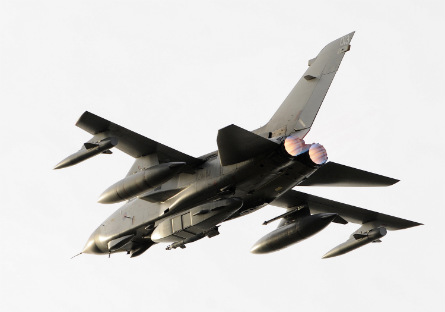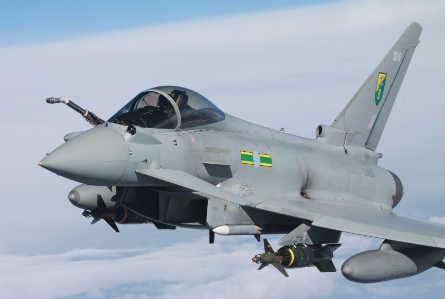Rolls-Royce aims to increase its provision of support services to military customers around the world by using its recent experience with the UK Royal Air Force as a possible business template.
The UK manufacturer is responsible for delivering availability-based support for the RB199 and Eurojet EJ200 engines, which respectively power the RAF's Panavia Tornado GR4 and Eurofighter Typhoon strike aircraft, both of which were involved in heightened levels of operation during 2011. The Tornado force saw action in Afghanistan and over Libya, while the Typhoon made a successful combat debut in the latter campaign.
An unexpected spike in GR4 use from March came at a delicate time, with Rolls-Royce having taken all responsibility for the repair and overhaul of RB199s on a pulse line at its Filton site, near Bristol, southwest England, only two months earlier. Agreed as an efficiency measure as part of a "Rocet 2" in-service support contract signed in April 2010, this moved the work from RAF Marham in Norfolk, eastern England.
By early December, operations with the GR4 fleet had reached 53,000 engine flying hours in 2011, including a combined 27,000h in combat, said Air Vice Marshal Simon Bollom, director combat air for the UK's Defence Equipment and Support organisation.
 |
|---|
© Crown Copyright |
Bollom said that despite the demands of flying combat missions from bases in Afghanistan, Italy and the UK concurrently, Rolls-Royce met 100% of its availability targets with the RB199. This refers to a commitment to have operational engines available on an aircraft within 2h, and depended on Filton continuing its activities 24h a day and delivering five or six repaired RB199s a week.
"Without the back-shop support, none of that could have happened or been sustained," Bollom said. RAF Typhoons also logged roughly 3,000 flight hours during the Libya campaign, with only one precautionary removal of an EJ200 during this period. "We only took one spare engine, and were confident that would be enough," he noted, citing the design's "inherent reliability" in UK service.
 |
|---|
© Eurofighter |
Paul Craig, Rolls-Royce executive vice-president defence services, said the company currently has engines in use on military aircraft in 103 nations, and is "well stood up to take the culture and the processes [with the RAF] to other customers".
Success in this area could see the company boost its 52% of defence activities in the service sector to about 60%, he said. "With the current environment a lot of our customers are looking to save money," he added.
Growth could also come via the provision of health monitoring and fuel management services, or propulsion mission care activities, drawing on Rolls-Royce's experience in the civil aerospace and marine propulsion sectors, Craig said.
To find out more about the Royal Air Force's combat aircraft fleet, download our free World Air Forces directory
Source: Flight International























